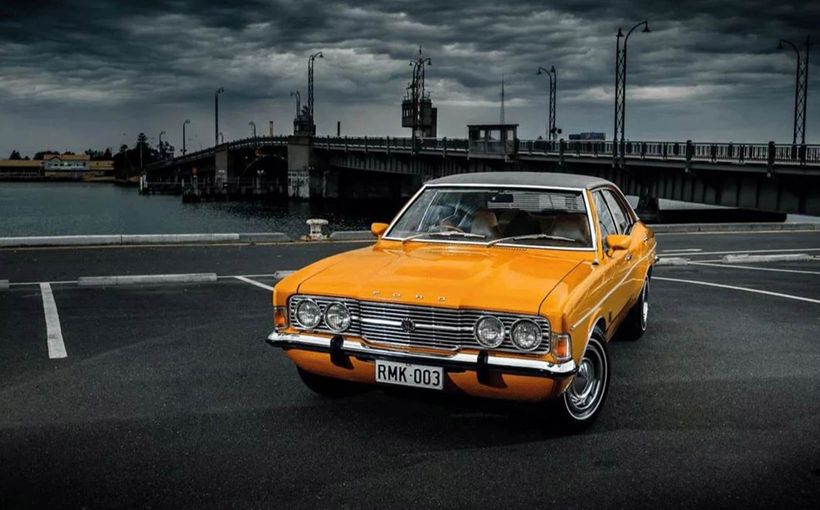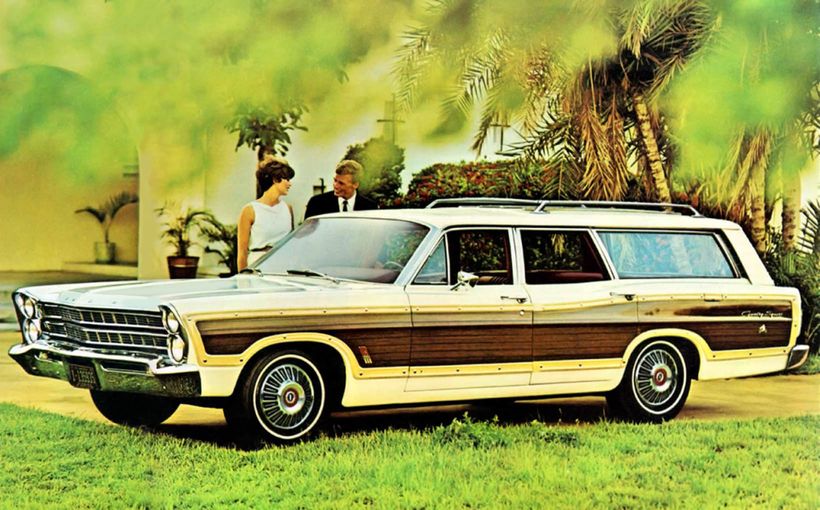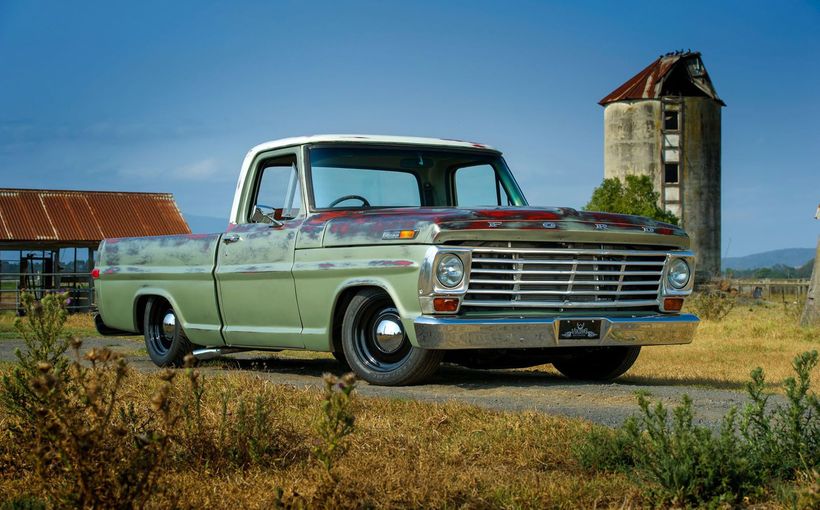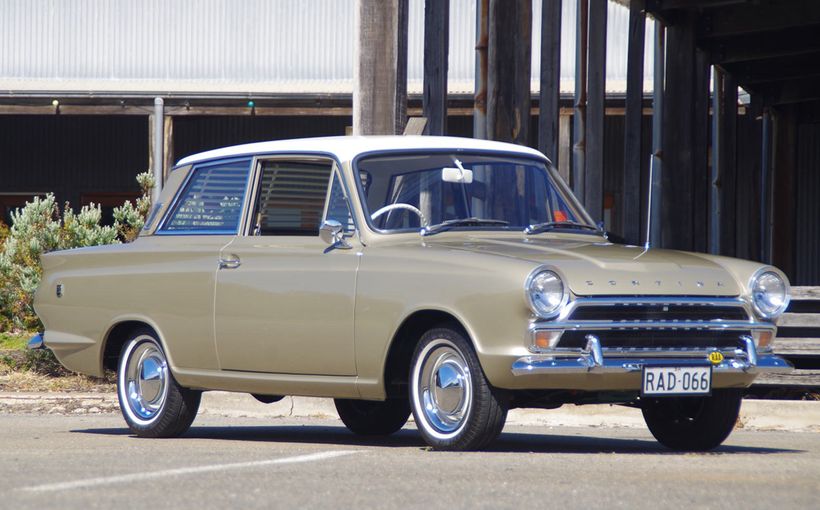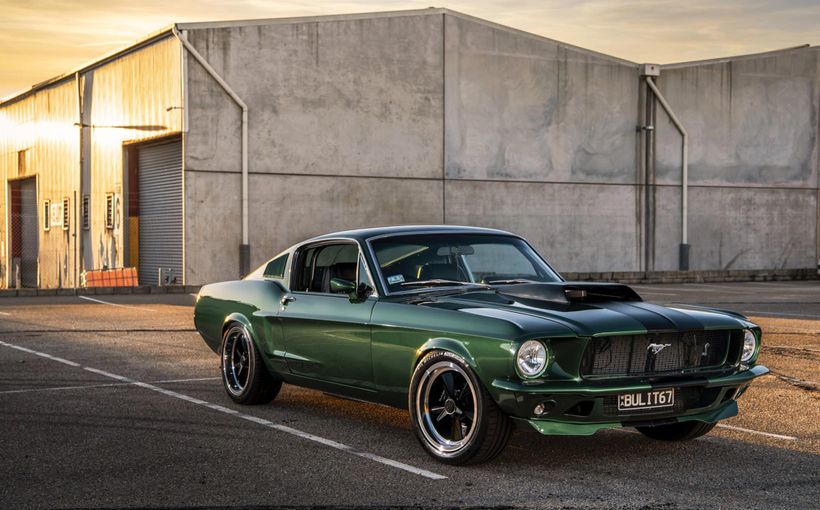Larry and Sue’s 1934 Ford Coupe Utility: A Family Treasure

Almost 90 years is a long time for one car to remain in the same family from new. This incredibly rare example of the quintessential Aussie ute – a 1934 Ford Coupe Utility – was purchased new by the Conners in 1935 and has recently been restored by the same family to its original condition.
According to proud owners Larry and Sue Conner, although their ute is identified as a 1934 model it was built in January 1935 at Ford’s Geelong plant and sold the same month. It was one of only 145 of the 528 produced that were ordered with the distinctive L-shaped ‘well-side’ wooden extensions at the top of the load tub to optimise carrying capacity.
“It’s not flashy or covered in chrome,” Sue says. “It was a work car and now thanks to Larry’s efforts it’s just like it was when his dad bought it new.” Doing most of the work himself, it took Larry 10 years to complete this superb ground-up restoration. And it was finished on August 27, 2020 – one day before his 81st birthday.

All images: Mandy Conner
Early Ford experts know of only one other restored example, so Larry and Sue’s ute would give hen’s teeth a run for their money. And its survival is of immeasurable importance in preserving our nation’s innovative history of automotive manufacturing.
The story of how Ford Australia’s young designer Louis ‘Lew’ Bandt invented this vehicle, which even attracted praise from none other than Henry Ford, has been well documented. However, it is worthy of brief reflection here to correct the often-repeated error that the ute was an Aussie invention.
Fact is, Australia did not invent the ute. As Ford readily admits, until the 1930s many automotive manufacturers and vehicle body builders had constructed wooden or metal ‘utility’ bodies on passenger car chassis in countless countries. Indeed, Ford’s Model T was a favourite recipient.

What Ford Australia did invent in 1934 was a uniquely comfortable and stylish interpretation. This was famously requested in a letter sent to head office from a Gippsland farmer’s wife in 1933, when Australia’s primary industries were becoming key drivers in the nation’s economic recovery from The Great Depression.
She wrote: “My husband and I can’t afford a car and a truck (banks would not finance two vehicles during those tough times) but we need a car to go to church on Sunday and a truck to take the pigs to market on Monday. Can you help?”
Ford responded quickly to this request, as it could see a potential new market. Bandt cleverly combined the front half of Ford’s classy Model 40 five-window coupe, with its distinctive sloping rear roofline and V8 powertrain, with a new extended rear body frame, load tub, tailgate and one-piece side panels of his own design.

The result was a robust light truck with the style and comfort of a passenger car. In other words, two vehicles for the price of one, exactly as requested by the farmer’s wife. On reflection, she should have been paid a royalty for such a great idea!
Bandt ensured that his self-named ‘coupe utility’ not only looked good but had a robust payload rating of more than half a tonne. Its body-on-frame design shared the coupe’s 112-inch (2845mm) wheelbase, with a simple and rugged transverse-leaf front suspension and leaf-spring live rear axle. Ford’s ubiquitous 221cid (3.6-litre) side-valve V8 with 85hp (62kW) and 150ft/lbs (203Nm) was paired with a three-speed gearbox and there were rod-operated drum brakes all-round.
It was immediately hailed as a must-have in rural communities. It also established a template not only for the many generations of Aussie-made utes derived from passenger cars that followed but also for countless reinterpretations by vehicle manufacturers around the world.

Which leads us back to our feature car, which was purchased new by Larry’s father Arch Conner in 1935. At that time, the Conner family lived at Boundary Bend on the Victorian side of the Murray River between Swan Hill and Mildura, not far from where the mighty Murrumbidgee and Murray Rivers meet.
“Arch was born in Victoria but when his family lived at Swan Reach (South Australia) in the late 1800s they started fishing on the Murray,” Sue says. “After serving in France during the first world war, Arch bought acreage at Boundary Bend to raise a family and earn a living from fruit farming and fishing.”
His intention was to grow fruit in the summer and fish the Murrumbidgee in the NSW Riverina during winter/early spring, when the rivers swelled with “snow water” from the high country (this was long before the Snowy Mountains Hydro-Electric Scheme) and brought bountiful fish along with them. Arch’s fishing licence was one of the longest in existence, dating back to the early 1900s.




In January 1935 Arch upgraded from his old Model T to Ford’s new coupe utility. He needed the extra V8 power, load capacity and driving comfort to cart his daily catch from the Murrumbidgee across the muddy Hay Plains (usually with tyre chains fitted) to “ice-works” located at rail heads in Hay or Balranald. There his fish would be packed in ice to keep them fresh during the long steam-powered rail journey via Echuca to Melbourne markets.
Larry thinks his father may have bought the ute from a dealer in Balranald. That would explain why it was first registered in NSW and maintained that rego for years, before switching to Victorian plates in 1942 during the second world war.
Finding a good spot on the river to establish a base camp for his annual fishing haul was made easier by loading the ute aboard the Etona - one of many paddler-steamers the Conner family owned in those days primarily for fishing duties. Arch had purchased the steamer (formerly a Church of England mission steamer) in around 1912.


The ute travelled as deck cargo and when Arch found a good spot, the Etona would be moored alongside the riverbank and the ute loaded ashore before fishing began. Each day Arch had to wait until the sun went down and the flies had left before he could gut his fish, pack them into baskets, load them into the back of the ute and transport them to the ice-works. Then drive back to camp on those freezing winter nights (he slept aboard the Etona) and do it all again the next day, for months on end. Arch was clearly carved from a hard grade of redgum!
His trusty Ford ute was also clearly up to the task for this hard seasonal work, not only hauling loads of fish in the winter but also working long, hot days at the fruit farm during the summer.
Larry, who was born in 1939, worked the family’s 100-acre fruit farm from a young age. He called it the “fruit salad” as each year it produced a bumper harvest of apples and oranges, along with grapes for sultanas. Like his father, Larry worked hard and so did the Ford, as running the fruit farm was an endless 12-month cycle of planting, watering, pruning, spraying and picking.

Originally, Arch irrigated his fruit trees and grape vines using steam pumps, which was another reason why the ute’s load tub and tailgate had particularly hard lives because it often hauled heavy loads of firewood for the boilers. In around 1960, when the tired old Ford was 25 years of age and soon to be sidelined, Sue met Larry during the annual summer harvest and they were married soon after.
However, Larry (who had five elder siblings but is now the only surviving Conner family member) had developed an affection for the ute during its decades of willing service. He wanted to keep it in the family, even though by then it was in poor condition and in need of total restoration.
“It wore out three engines working for us before it was finally put to one side in the early ‘60s,” Larry reveals. “So, I asked my dad if I could buy it? He said yes, so I paid him 25 pounds, got a hand-written receipt, picked it up and put it in a shed.”

The ute sat gathering dust at Boundary Bend for many years until Larry and Sue retired in Hillston in the NSW Riverina, after earlier moving to nearby Griffith for work. Larry finally had time to restore the ute, so they collected it on a trailer and towed it home.
It sat in the driveway long enough for Sue to start nagging Larry about making a start on it and he said he’d do it when he was good and ready. “Well, I got home from golf one day and he’d done it alright,” she recalled. “He’d stripped it completely and I reckon all the parts must have covered half an acre, they were everywhere!”
Larry’s self-taught mechanical, paint, panel and wood-working skills were tested during the decade-long restoration – “you can’t hurry a Conner!” says Sue - in which he did all the work himself except for the upholstery trimming.
The steel chassis frame was stripped back to bare metal for powder-coating and the rebuild started from there. Although the ute’s original engine was long gone (not uncommon given the inferior quality of fuel and lubricants in those days), remarkably it retained most of its original bodywork and running gear - even the Huidaille lever-type shock absorbers - which were all restored to factory specifications.

The flathead V8 (the ute’s third remember) had been bought second-hand in the 1950s. However, Larry got some surprises when he pulled it apart. A hole in one of the pistons had been patched with what looked like “a piece of jam tin” and in some places bearing shells had been replaced by well-oiled “cardboard job cards” - yet it ran for many years without a problem!
“Restoring the original mudguards was hard,” Larry says. “Because the roads were poor in the old days, the mudguards were badly cracked from flexing caused by all the corrugations. Also, running with chains on the tyres was the only way it could keep going when it was muddy and the chains picked up sticks and rocks and flung them under the guards, so there was a lot of damage done over time.”
Fortunately, Larry managed to restore the mudguards to ensure that most of the original body panels and brightwork were retained. Only the grille (he still has the battered original) and tailgate (it was scrapped decades ago) were replaced. The period-perfect colour, which Larry and Sue think is Vineyard Green, was accurately colour-matched with a factory-painted internal body panel which had never seen the sun.


Having previously built his own wooden speedboat, Larry applied his woodworking skills to restoring the original framing in the cab. He also had to rebuild the wooden-framed and lined load tub, as decades of fish slime, heavy payloads and exposure to the elements had all but destroyed it. “That was a bit tricky, particularly the bends over the rear wheel housings,” Larry admits.
The original speedo had only 21,379 miles on its odometer when these images were taken (by their talented daughter Mandy). However, as it only counts to five digits, it’s anyone’s guess how many times it has rolled past 99,999. Larry’s estimate is at least three times, which is more than 321,000 miles – or more than half a million kilometres of hard yakka. As they say, old Fords never die.
“When he finished restoring it, I rode in the cabin one day and I said to Larry ‘this is the first time I’ve ever ridden in the front!’” Sue says. “When I worked at Larry’s place, I was always riding on a trailer behind it, loading or unloading whatever they were picking at the time.”

Given its sentimental value for the Conners and huge significance in Australian - indeed global - automotive history, we can only hope such a rare treasure continues to remain in the right hands and preserved in its original specification for current and future generations to appreciate.
“We don’t want to sell it but then we’re not going to be around forever, so we’re not sure what to do with a car like this,” Sue says. “We’d like it to go where people can get the enjoyment of looking at it and riding in it, not hidden away under a dust cover in a private collection somewhere.” And that would be quite a legacy, courtesy of the Conners of Boundary Bend.
View Larry and Sue’s Shannons Club Garage and Connect


